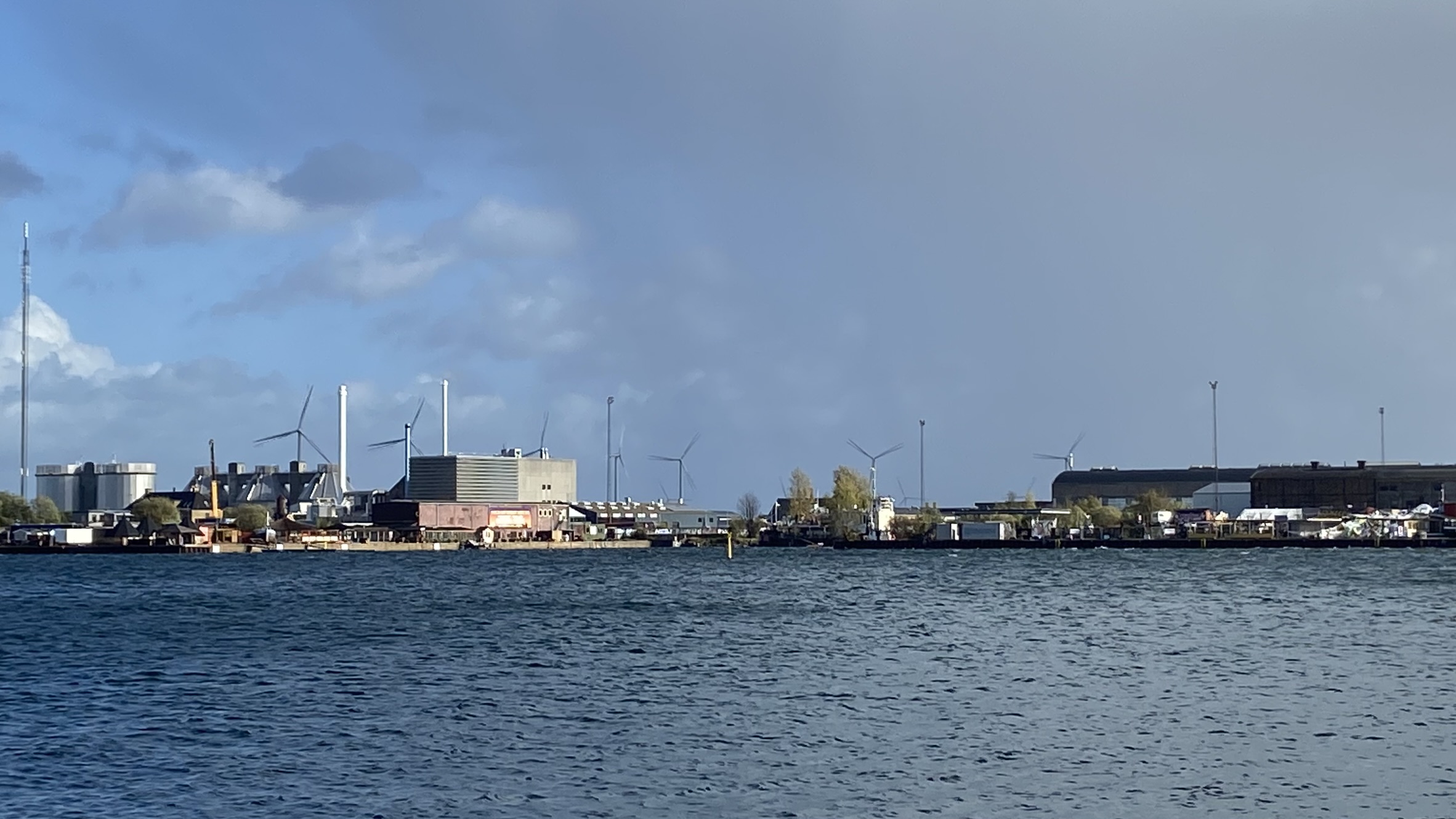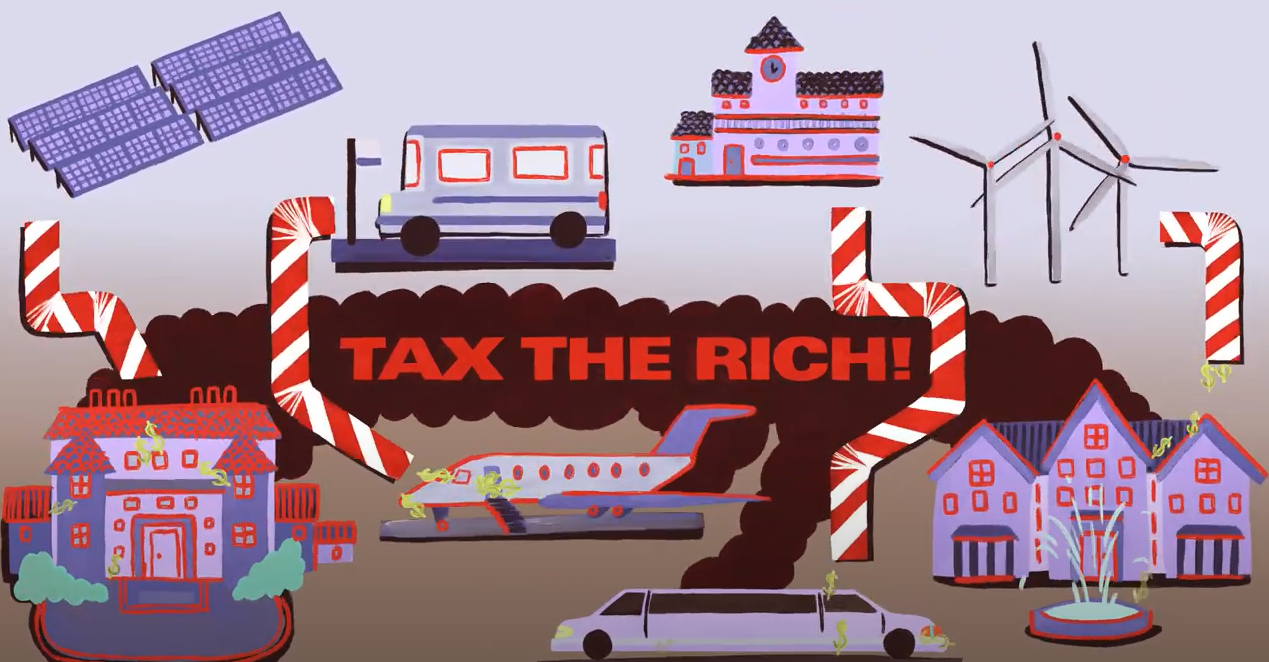There is little chance of preventing catastrophic climate change without replacing fossil fuels (like coal and oil) with renewables like wind and solar. A radical energy transition is needed, and, as the German “Energiewende” demonstrates, it is feasible as well. The energy transition in Germany – driven by a sustained and committed social movement – has been a spectacular success. On certain days, when the sun is shining and the wind is blowing, the country generates close to 100% of its electricity consumption from the sun and wind. Electricity generation, once dominated by fossil fuel-burning monopolists, is now well on its way to being a clean and decentralized system with strong public elements.
However, this success is by no means unqualified. Electricity is getting greener, but this achievement has not been replicated in heating or transportation. And the renewable sector seems resistant to unionization, leading to too many jobs that are temporary, low-wage, or dangerous. Moreover, the costs of this transition have resulted in higher electricity bills for poor and working people. This has not been a just transition.
But these problems can be solved through policy interventions. The proponents of the Energiewende need to take social questions seriously, while unions and their left allies need to bring environmental issues to the center of their agenda. New alliances are needed to block a resurgent corporate agenda and to deepen the energy transition so that it is both sustainable and just. By changing the facts on the ground, the Energiewende has created a new context for discussing energy democracy and the social ownership of the energy system. Germany’s experience is unique, but there are important lessons to be learned as we work to transition other national energy systems to be more just and sustainable. (RLS–NYC)
To date, the energy turnaround in Germany has first and foremost been an “electric-power turnaround.” In the area of heating, the dynamics have been much weaker. In the fuels sector, we see chaos, setbacks and few successes. Last, not least there has been little progress in energy savings and overall energy demand reductions. Keeping these restrictions in mind the German Energiewende (energy turnaround) story includes both achievements and new types of challenges.
1. The Energiewende (energy turnaround) has been a spectacular success in many respects: speed, citizen participation, technical progress, and changing power relations.
The share of green electricity is currently surpassing 30 percent. There are 25,000 windmills and 1.4 million photovoltaic facilities in Germany, half of which are in the hands of citizens and farmers. Almost 400,000 jobs have been created in the renewables sector. And the expected price reductions of photovoltaic and other renewable energy facilities have by and large been realized.
The primary legal framework for the transition of Germany’s power system is the so-called Renewable Energy Law (Erneuerbare-Energien-Gesetz, or EEG). In effect since April 2000, the EEG has shown that it is possible to restructure an entire industry sector through effective political measures In the case of the EEG these were:
• Feed-in tariffs (price regulation instead of quantity regulation);
• Priority for renewables (green power has preferential access to the energy grid);
• Long-term price guarantees (instead of short-term incentives);
• Pushing different kinds and different size categories of renewables with a differentiated system of feed-in tariffs (against the market logic of expanding only the cheapest energy sources).
The EEG’s success formula was a combination of planning and market incentives. Investors did not have to be concerned about market access and prices, as both were guaranteed. What remained where management risks, technology-related risks, and the need to innovate.
The energy turnaround has shown that promoting the use of renewable energy sources―in this case through the EEG―is far more powerful than pricing and trading the emissions of nonrenewable energy sources which has largely shown to be ineffective and counterproductive.
2. The energy turnaround succeeded due to persistent pressure from social movements on the legislature.
The environmental movement and the anti-nuclear-movement were the driving forces of Germany’s Energiewende. Advocates of dangerous and dirty energy sources were pushed into a defensive position while proponents of the transition formed strategically forceful alliances, both in Parliament and in civil society.
These alliances were the backbone of the renewable energy law, which in turn created massive opportunities and even access to financial gains. A photovoltaic facility can today serve as a savings account on the roof and a share of a wind mill is generating interest that is higher than that of the money market.
3. The Energiewende provides opportunities to radicalize the “energy question”.
As electricity is no longer a prerogative of big companies, questions around its legitimate control arise: Who decides on our energy sources? Who decides on the grid? Who decides on costs and benefits? Citizens increasingly demand a democratic solution of this question: We, the people, decide!
Across regions and cities, we witness an energy transition from below: local initiatives are seeking alternative forms of sustainable living by taking back grids, founding energy cooperatives, re-inventing a utility industry under public control, and establishing concepts of regional energy autonomy based on renewables and energy saving.
Once a majority understands that renewables are in fact (and not only in theory) becoming the basis of energy supply, it is easier to advance democratic and public solutions for the entire electricity infrastructure. Big corporate “solutions” then become alien in favor of the reality of a decentralized energy management system with strong public elements.
4. The Energiewende has raised the question of political and economic power and is now endangered by legal changes in effect since August 2014.
The fight of the masses of small users of photovoltaic facilities against big monopolies can be seen as one of David against Goliath. And especially during the summer, the sun is our powerful partner in defeating Goliath. Hundreds of thousands of photovoltaic facilities are stealing the most profitable hours from big electricity companies―at midday, when both demand and solar power reach their daily high.
But, of course, Goliath is fighting back. “Delay and take over” is the strategy of electricity companies, albeit not openly expressed. Slowing down the development of photovoltaics and onshore wind power implies longer running times for conventional power plants, more opportunities for offshore wind in corporate hands, and more time to resolve serious offshore problems.
The debate around the costs of renewables served as the Trojan horse to push the corporate agenda. While keeping major hidden costs of fossil and nuclear energy (as well as the subsidies they receive) out of the discussion, corporate interests succeeded in spotlighting the price of green power and the uneven distribution of transition costs―corporate bosses suddenly seemed to discover their compassion for the poor.
The government responded with expansion limits for all renewables. Feed-in tariffs will phase out and starting in 2017, calls for bids and tenders will replace the existing system.
5. Reclaiming the dynamic of the Energiewende requires “Socializing the Environmentalists” and “Greening the Left and the Unions”.
In order to fight against the current setback and to gain new momentum, it is crucial to broaden the social base of the energy transition. If we want ecological progress, we will have to provide “freedom from fear”. Promoters of the energy turnaround are called upon to take the social issue seriously, and to change the debate around the distribution of transition costs and benefits (including the quality of green jobs). These issues have to be top priorities of all ecologically concerned activists.
There also has to be more awareness about new “green” distribution battles. Today, only homeowners with above-average incomes can afford and profit from private energy autonomy. Self-produced solar power is currently tax-free and more than 50 percent cheaper than electricity from the grid; however, the acquisition costs are high. The principle of energy autonomy is thus in conflict with the principle of social justice. This contradiction could easily be solved with pricing regulations and social tariffs. Since that requires (currently not foreseeable) amendments of national energy laws, collective and community-based projects become even more important.
What is needed are more activists who master the five pillars of the “magic pentagon”. These five capabilities are missionary ambition, communicative power, local acceptance, organizational talent, and technical expertise. Based on stronger activism, the energy turnaround can potentially be the entry point into a broader socio-ecological transformation. Multidimensional ”returns” on this initiative could be:
• The Reduction of CO2 emissions
• The creation of added value on the local level, with new jobs in commerce and agriculture
• The substitution of imported fossil fuels by clean domestic energies
• Favorable energy prices for private households and local companies through local heating networks and drastically increased shares of cogeneration
• The strengthening of local democracy, the municipal tax base, and civic involvement
• The linkage of people’s and local interests
• Stable regional economic circuits through a needs-based coordination of resources, procurement, production, and use
• Profitable recycling of residual and waste materials instead of their expensive disposal
• Increased independent leadership of municipalities, public utilities, citizens, and local companies―minimal dependence on external investors
• The expansion of inter-municipal and inter-regional exchange
• Strengthening of environmental awareness and knowledge about energy issues
• The implementation of sustainable development models that reduce the energy demand.
Thus, a new type of community will appear on the horizon: A type that is democratized by means of people’s decision-making and control, based on the principle of complete transparency, with the authority and capability to act economically as a self-confident community.
6. Despite vast differences between national energy systems, there are lessons to be learned from the German experience.
Good Practices could be:
• Establishing legal frameworks that provide sufficient incentives for all sorts of new and independently operating renewable energy providers.
• Supporting innovation, diversification, and decentralization with feed-in tariffs and rejecting quota systems as well as caps for renewables.
• Insisting on clean energies’ preference in terms of global challenges and in terms of overall cost advantages.
• Keeping in mind that energy transition is not only a technological, but also a fundamentally social issue. Distributing costs and benefits with fairness, and with particular regard to low incomes.
• Creating alliances that show in practice what energy democracy is all about: renewable energy under regional control, diversified ownership with strong elements of direct public responsibility, more local jobs and income through “import substitution”, energy self-determination reducing and, finally, ending the dependence on dirty fossil fuel cartels.
• Winning against corporate interests with popular movements and tens of thousands of pioneers strongly influencing the legislature.
• Going beyond “capitalist greening” and focusing on transitional speed―establishing as many decentralized renewable projects as possible within a short period of time.
• Opening up space for a powerful transition from below considerably decreasing the market share of traditional corporations.
• Being aware that neither defeats nor victories are ever final.
If we take into account these lessons learned, a fundamental shift in our energy production and supply is within our reach―and not in ten or twenty years, but now!



